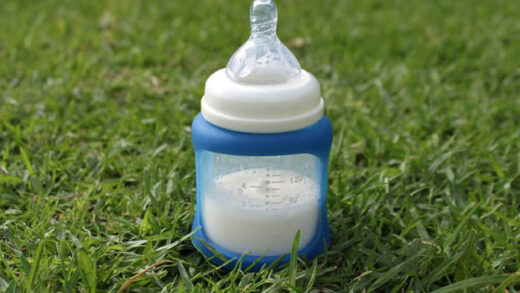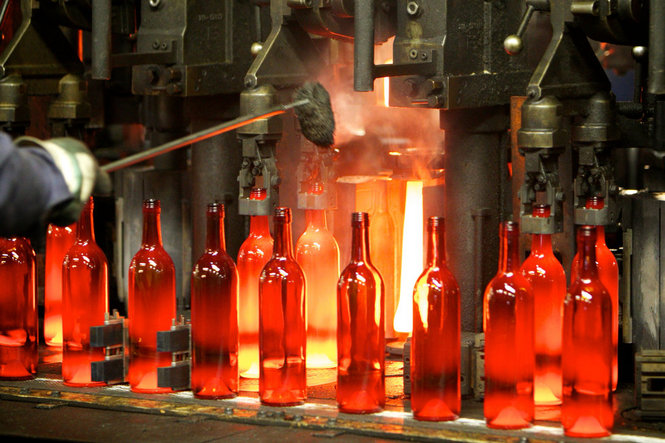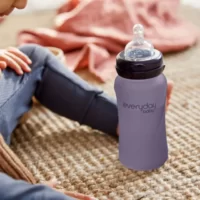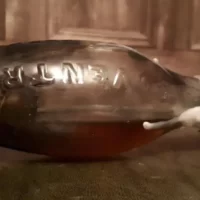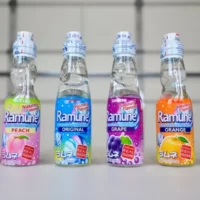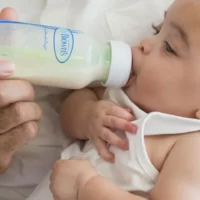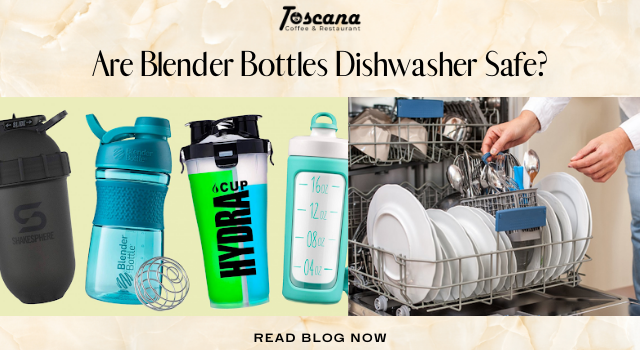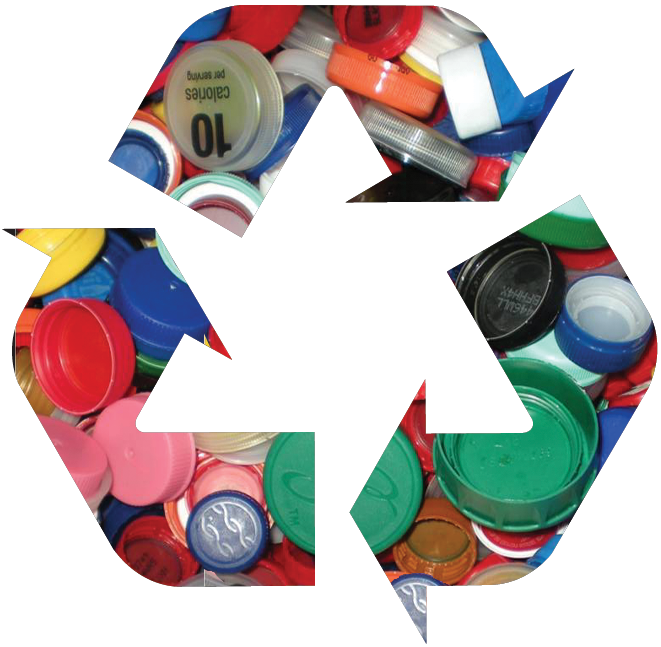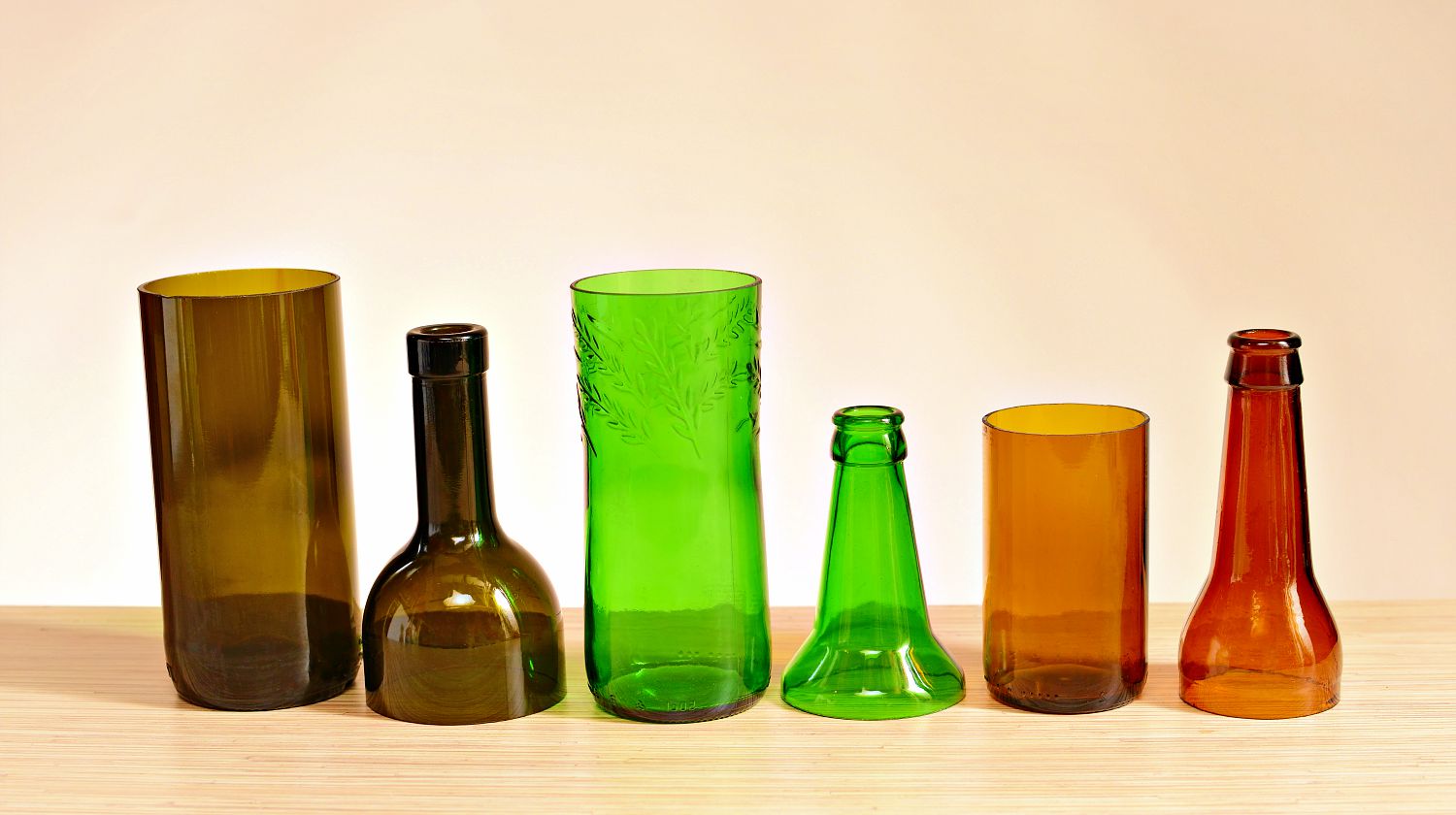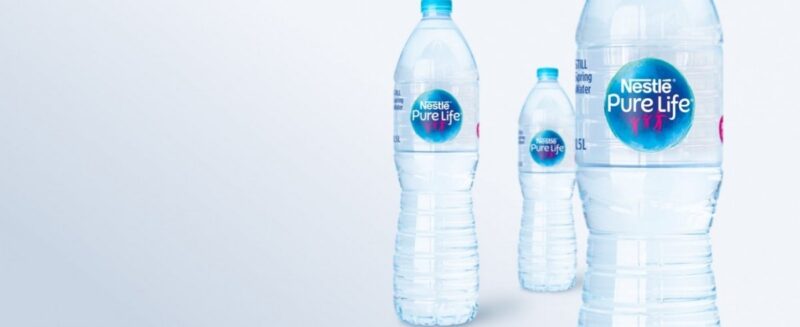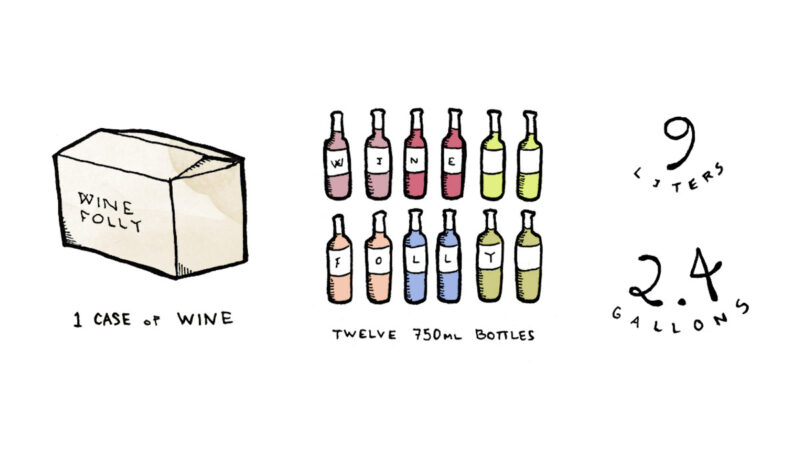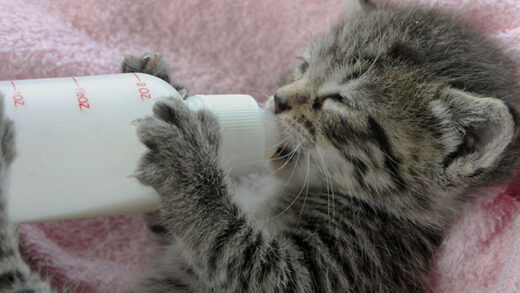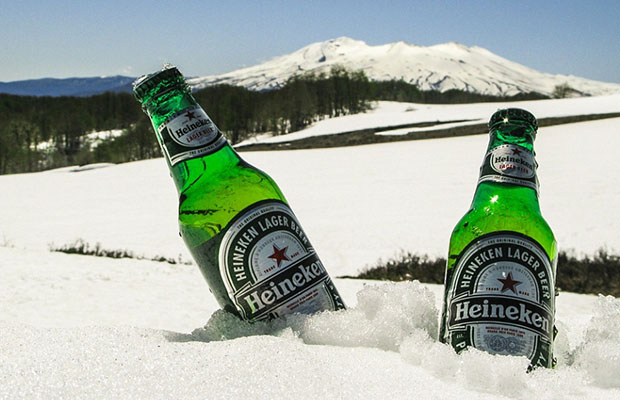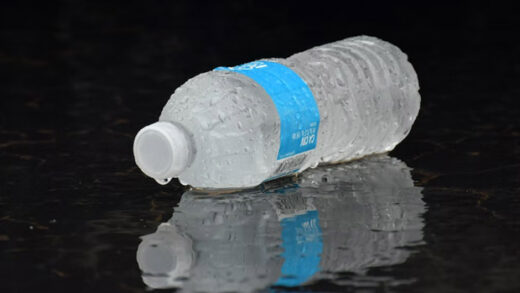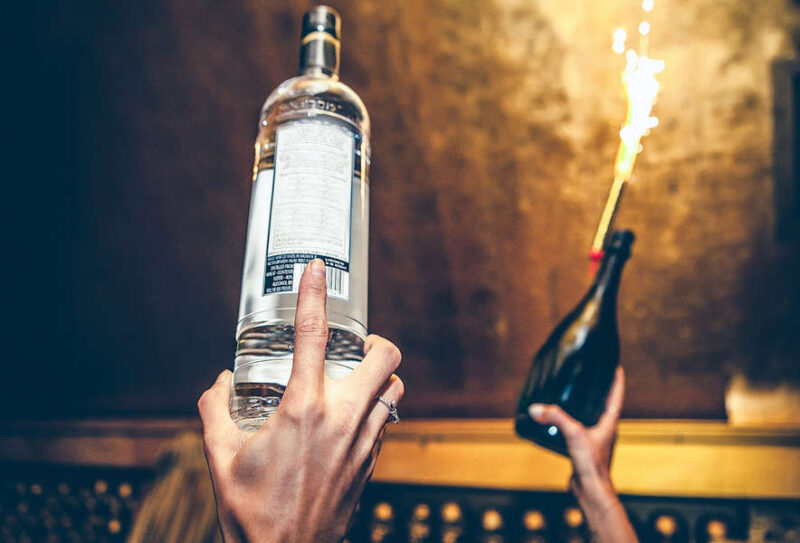A baby is a joyous occasion, especially for new parents. When it comes to feeding your baby, using a bottle can be a vital part of the routine. Do you know how many baby bottles should you have?
One of your most important responsibilities is making sure your baby eats. So, you might be wondering how many bottles you should purchase and stockpile. The precise figure depends on a number of variables, including your baby’s age and whether you are breastfeeding. The factors to take into account and bottle types that are offered are listed below.
Table of Contents
How Many Baby Bottles Should I Have Throughout The Day?
It’s unique to each baby. Whether you are using the formula, breastfeeding, or a combination of the two will affect how many bottles you need per day. Other considerations include your baby’s age. To reach peak feeding, there isn’t a set amount of bottles that are advised. However, you should think about how frequently your baby eats and, in particular, how frequently you want to clean the bottles.
You can expect to feed your newborn baby every two to three hours. They may need to eat more frequently if they are breastfeeding because breast milk is digested faster than formula.
Based on your baby’s age and feeding preferences, we’ve compiled the typical advice for how many baby bottles you need.
One to four baby bottles
You won’t require as many bottles if you are at home and breastfeeding your child. Most likely, you’ll only need one to four bottles on hand each day. Of course, if you need to leave the house to run errands, you’ll want to have a few bottles on hand. Having a few bottles on hand is another option if you prefer to bottle-feed your child in public or if your partner wants to participate in feedings.
As your child gets older, bottles become less important. You’ll need fewer bottles if your baby is past the six-month mark and beginning to supplement with solid foods. In this case, experts recommend feeding them formula or breastmilk from a cup instead of a bottle.
Three to six baby bottles
It’s common for babies to feed five to six times per day in the two-month to five-month age range. Less than six bottles a day are probably sufficient if you combine breastfeeding and bottle feeding. Take into account how frequently you should clean the bottles. You can purchase a few more bottles if you’d rather not have to worry about cleaning them every time your child needs to eat.
Six or more baby bottles
Within the first month, newborns need six to eight feedings per day of around two to four ounces of milk. You may need to feed your baby less frequently as they enter their second month because they are eating more frequently.
During that first month, if you are also breastfeeding your child, they probably won’t require more than six to eight bottles per day. It’s best to have more bottles on hand if you work or will be away from your baby for extended periods of time, though. To cover the duration of your absence, you should have enough.
How to Find Your Ideal Baby Bottle?
Let’s discuss the bottles that are the most suitable for your circumstance now that you have an idea of how many you require. When selecting bottles for your child, there are a few things to keep in mind. It all depends on the kinds of baby bottles that are made and the materials that were used to make them.
Types of bottles
There are many different bottle types available, so pick the one that works best for you and your child.
The bottle should be simple to use and make it simple to feed your baby. In order to avoid having to transfer milk from one container to another when you plan to breastfeed, you want a bottle that enables you to express, store, and feed your baby.
Standard bottles
Generally speaking, when you think of a baby bottle, you think of standard baby bottles. Parents typically use these bottles—which are the most prevalent ones you’ll see in stores—for daily needs. You don’t get any bells and whistles with a typical baby bottle. They are dependable and provide the most common fits for teats and accessories. The most affordable option is usually regular baby bottles.
Anti-colic bottles
Sometimes, babies swallow air when using standard bottles, leading to painful gas and indigestion. This can cause your baby to have prolonged fits of crying, also known as colic. The first six weeks are when colic is most prevalent, and it usually goes away on its own. The purpose of anti-colic bottles is to lessen the likelihood that your child will ingest air while eating. In general, this kind of bottle costs more and is more challenging to clean than standard bottles. It’s worth it, though, if you’ve noticed that your child frequently ingests air.
Self-sterilizing bottles
The microwave can be used to sterilize self-sterilizing bottles quickly and easily. You’ll place the bottle’s components on top of a small portion of the water-filled base. After that, you steam sterilize it in the microwave for a short while.
Disposable bottles
These ready-to-use single-use bottles cost not too much money. However, if you use them often, the cost of feeding your baby with reusable bottles will quickly surpass that of using disposable ones. They also don’t respect the environment.
Baby bottle materials
The manufacturing of baby bottles uses a few different types of materials frequently. In the US, the most popular materials are plastic, glass, silicone, and stainless steel. There are advantages, drawbacks, and price ranges for every material. Even though some materials might be better in certain situations, the final decision may come down to personal preference.
Plastic bottles
The most typical bottle type has historically been plastic, but there are some things to think about. In the past, plastic baby bottles had the industrial chemical Bisphenol A (BPA) in them. In 2012, the US Food and Drug Administration banned the plasticizer BPA from baby bottles due to health concerns. However, some chemicals that are still allowed in plastic bottles may make you uncomfortable about using them. Despite possible health risks, plastic is a practical and affordable choice. Avoid plastic bottles that contain PVC, BPA, BPS, and other harmful chemicals if you decide to use them.
Glass bottles
Chemical risk is lower with glass bottles than with plastic ones. They can withstand high temperatures and are simple to sanitize. Glass bottles have the drawbacks of being more expensive and prone to breaking. Your baby might try to grab the bottle while eating if they’re too heavy for them.
Silicone bottles
Parents prefer food-grade silicone bottles because they are shatter-proof like plastic but don’t pose the same risk of toxic chemicals. Make sure the product is made with food- or medical-grade silicone if you’ve decided to give your baby silicone bottles. Be aware that silicone bottles typically cost more than plastic and glass bottles.
Stainless steel bottles
Although stainless steel bottles are frequently more expensive than other types, they have advantages over others. For instance, stainless steel bottles are resistant to breaking, lightweight, and easy to hold in high temperatures. The cost of stainless steel bottles and the possibility that they contain lead are their main drawbacks. Buy #304 or 18/8 food-grade stainless steel to make sure your baby bottle is lead-free.
How Should I Choose A Baby Bottle?
The baby bottle you decide is the best one for your child will depend on a number of crucial factors.
1. Material
Make sure they are phthalate- and BPA-free regardless of whether they are made of silicone, glass, plastic, stainless steel, or any other material.
The bottle’s material is important, as you can see from the paragraph above, but there are other important considerations when choosing the bottle for your baby.
2. Size
Starting with a smaller 4 or 5-ounce bottle is always a good idea. Change to a larger size as your child gets bigger and starts to need more milk or formula. Every baby is unique, so in addition to their age, it will depend on how they feel in their tummies and what they prefer.
3. Shape
Standard and angled bottles are the two types of bottles that are currently available. Standard bottles are designed to be used while your baby is cradled in your arms or in a more laying-down position for feeding. Never feed your baby while lying completely flat, remember!
However, angled bottles, which are intended to be held in a semi-upright position while feeding, have been shown to be effective in reducing gas and colic as well as preventing ear infections.
It’s noteworthy, that there are also bottles shaped like a breast (Nanobebe bottles). For breastfed infants, they work best because they make the switch from breast to bottle easier.
4. Bottle Neck
Bottles with wide and narrow necks are available. The most common bottle-fed baby bottle is a narrow neck bottle, which typically works well. Typically, they take up less room in your diaper bag.
Wide neck bottles, which mimic the shape of a mother’s breast in a natural way, are typically better suited for breastfed or fussy babies. Additionally, they are simpler to clean.
5. Venting System
These unique systems are intended to lessen the possibility that your baby will swallow air while feeding, which will lessen the possibility of wind, colic, and acid reflux.
The venting systems may be incorporated into the bottle or the nipple.
The best brand of anti-colic baby bottles, in my opinion, is Dr. Brown’s Bottle. The Natural Flow Options+ with a built-in venting system is probably the best anti-colic bottle, that also reduces the chance of gassiness in babies. Sadly, the bottle’s internal venting system makes cleaning a little more difficult.
Additionally, if your bottle is not assembled or cleaned properly, having a venting system inside it could cause it to leak.
Nevertheless, having one is still advised for your baby’s benefit and comfort to help prevent wind and colic (not to mention you might get more hours of sleep).
6. Ease of Cleaning
In addition to making the bottle easier to hold in small hands, the shape also makes cleaning the bottle easier. Bottles with a wide neck are typically simpler to clean.
You can fit a standard brush in them due to the wide opening. The oddly shaped and narrow-necked bottles may need their own unique cleaning tool. So, the expense might increase.
Additionally, a bottle that has fewer parts is simpler to clean.
7. Compatibility with Breast Pump
You don’t fully understand this until you begin pumping your milk. It is so convenient to be able to express milk directly into a bottle, which you can then give to your hungry baby or keep in the refrigerator. It saves time and makes being a mom so much simpler!
If you can’t breastfeed your baby, but still want to serve them the breast milk, using the breast pump is your solution.
If so, the first thing you should check is that the baby bottle is compatible with your breast pump.
Some bottle brands are exclusive to that brand of a breast pump, while others are compatible with a wide range of other brands of breast pumps (for example, Nanobebe offers adapters for all common and well-liked breast pumps like Spectra, Ameda, Lansinoh, etc.
8. Nipples
Nipples are available in a variety of sizes, flow rates, materials, and designs, just like bottles come in various shapes and sizes. Your baby will express his or her satisfaction with your decision regarding the bottle nipples, which are an essential part of the feeding process.
What Is The Shelf Life of Baby Bottles?
Glass, silicone, and stainless steel baby bottles last a very long time and only really need to be replaced if they are broken. Glass bottles require special attention because they are more likely to chip.
It is recommended to replace plastic baby bottles every two to three months. You should replace them right away if they become harmed, discolored, or begin to smell bad. To ensure everything is in good condition and operates as it should, regularly inspect all of your bottle-feeding equipment.
How Do You Clean Baby Bottles?
I have some good news for you! Baby bottles do not require sterilization before each use. For the first few months, you can continue doing this, but as your child gets older, you only need to sanitize every few days. According to the CDC, you may need to sanitize bottles daily or more frequently if your baby was born prematurely, has a medical condition, or is under three months old. Depending on your baby’s health, speak with your pediatrician about this.
Use a separate tub or basin (so they don’t touch the sink) and a dedicated baby bottle brush when cleaning your baby’s bottles, nipples, or anything else involved in the feeding process. Do not use a towel to wipe them; instead, thoroughly rinse them in warm water and let them air dry completely. The dishwasher can also be used, provided that it has a special basket designed to hold all bottle components.

